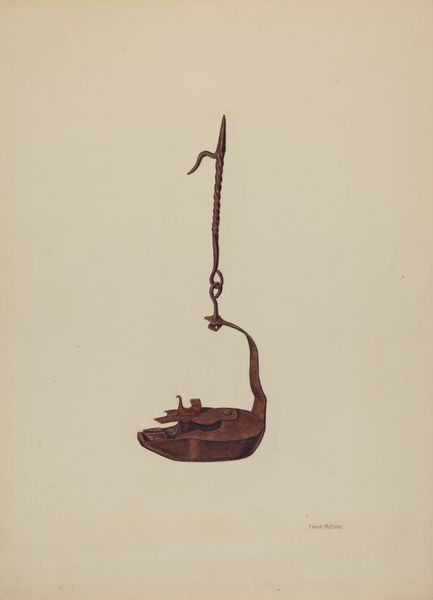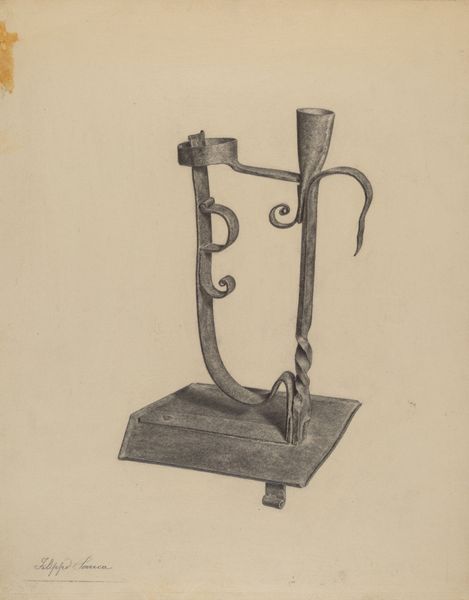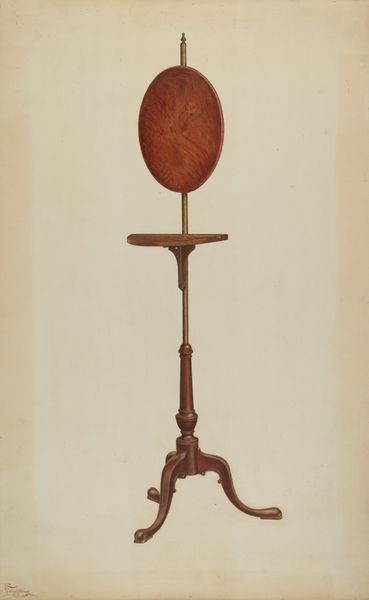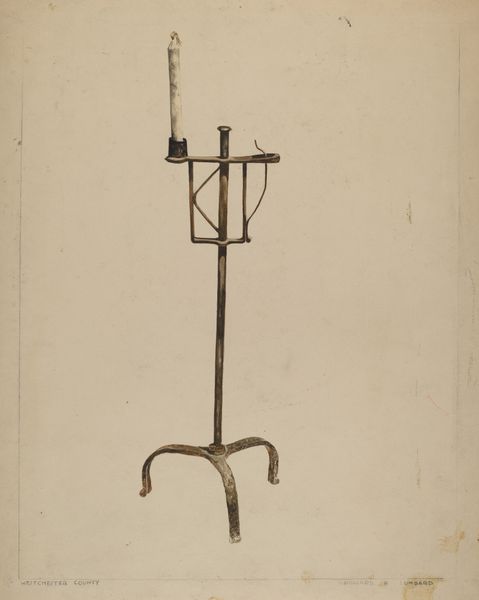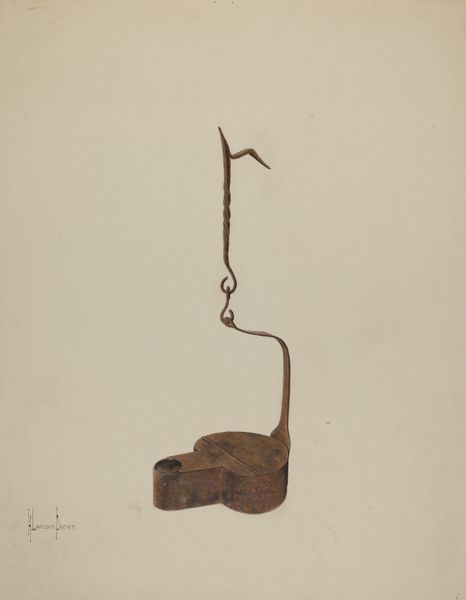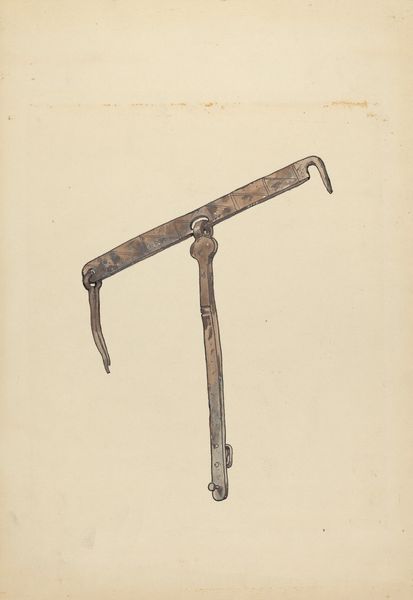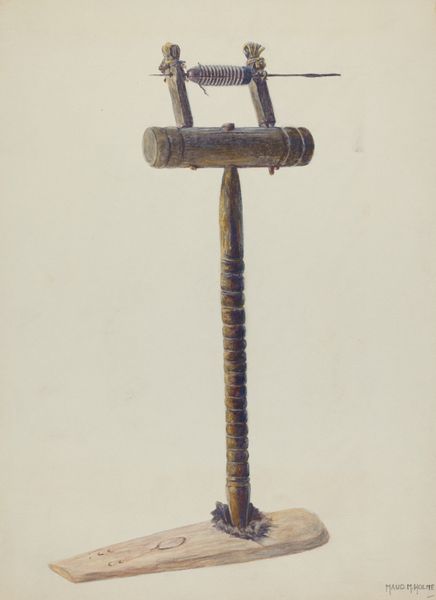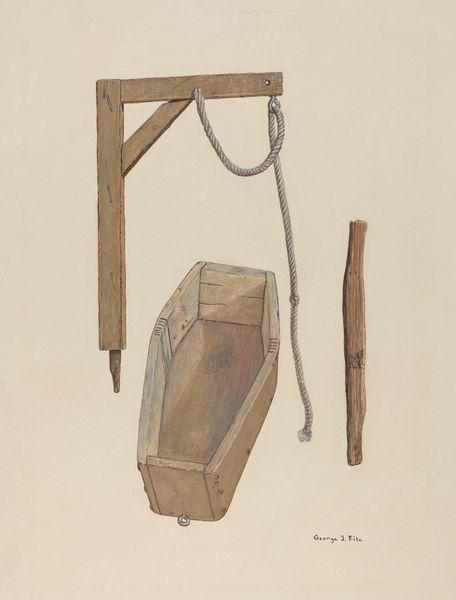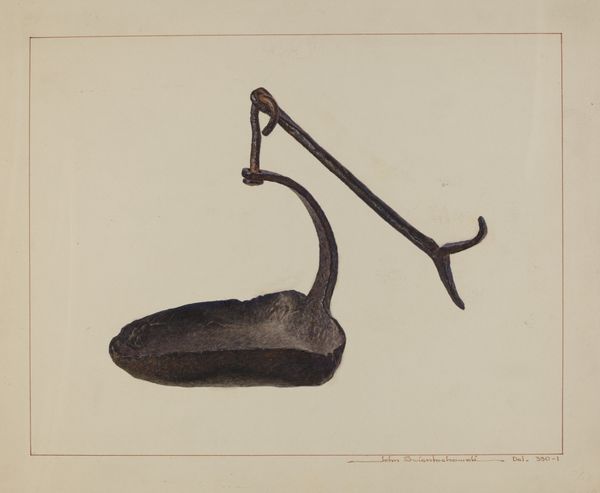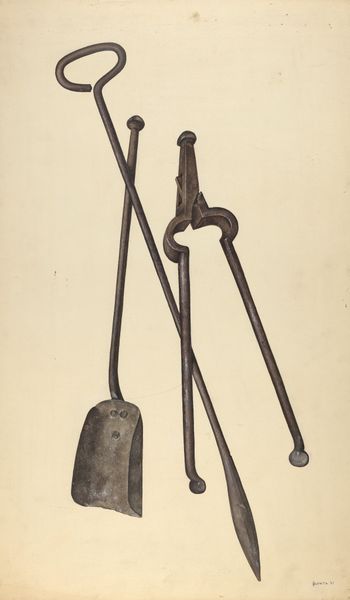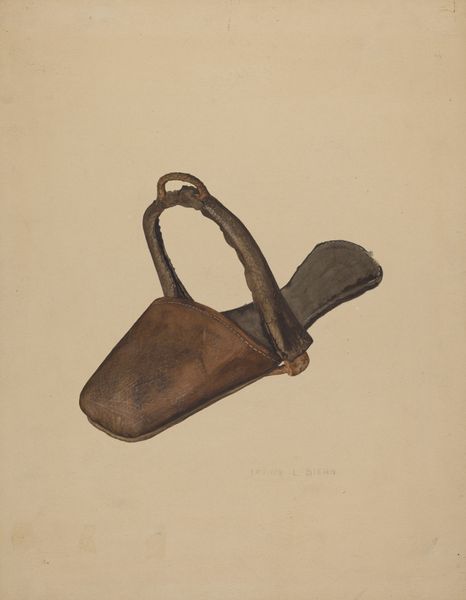
drawing, paper, pencil
#
drawing
#
paper
#
pencil
Dimensions: overall: 35.8 x 24.5 cm (14 1/8 x 9 5/8 in.) Original IAD Object: 4: long; 3 1/8" wide; 4 1/2" high
Copyright: National Gallery of Art: CC0 1.0
Curator: Let's turn our attention to "Betty Lamp," a drawing on paper completed around 1939 by Nicholas Acampora, rendered meticulously in pencil. What catches your eye initially? Editor: Its austere stillness. The composition, with the lamp centered against a muted backdrop, evokes a quiet, contemplative mood. I’m struck by the artist’s dedication to rendering the textures, particularly the way the metal suggests wear and use. Curator: The lamp itself offers a peek into the material conditions of early American life. The Betty lamp was a common household item, particularly in areas where more sophisticated lighting wasn’t available. Think about what daily life was like where a device like this might have been central. Editor: Right, the simplicity of the form speaks volumes. There's an elegance in its functionality. Look how the artist uses line and shadow to define its volumes—the subtle shifts suggesting a tarnished, patinated surface. The rendering suggests an actual object; it doesn't romanticize the scene at all. Curator: And its very commonality underscores the historical realities. For so many, it meant an ability to extend the day beyond sunset. The light it provided may have made a profound difference in someone's lived existence, like education, crafts or social gathering, that could occur in low light conditions. Editor: Definitely. Thinking about light reminds us of contrasts. The solid forms are punctuated by shadows, particularly within the lamp's hollows. It almost creates its own chiaroscuro—very carefully done. It suggests the unseen, what is held and potentially protected by the construction. Curator: Absolutely. Its simplicity, however, also represented a reliance on readily available resources. A Betty Lamp would be refilled by any sort of animal or vegetable oil. I imagine it was more useful than beautiful, though Acampora definitely portrays it beautifully. Editor: Yes, there's a fascinating tension. On one hand, the mundane nature of the object; on the other, the artist's studied portrayal and almost clinical execution. I’m finding myself truly appreciating the beauty inherent in simple function, elevated by focused artistic observation. Curator: Thinking about the past and the social conditions brings light into this Betty Lamp that would otherwise remain in darkness, even if this is just a pencil drawing. Editor: Agreed, it reveals to us more about light, shadow, and the art of seeing, even something as familiar as an everyday household object from the past.
Comments
No comments
Be the first to comment and join the conversation on the ultimate creative platform.

